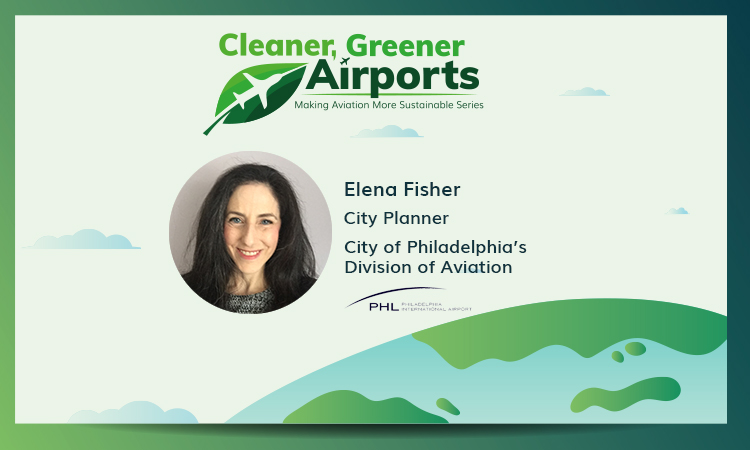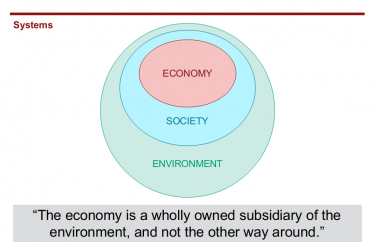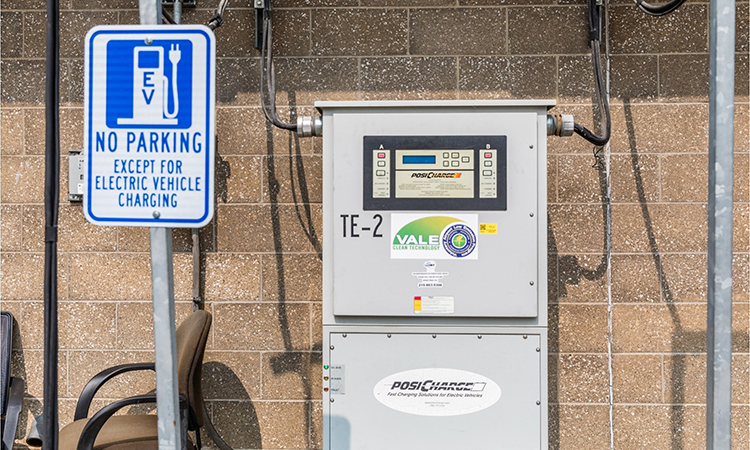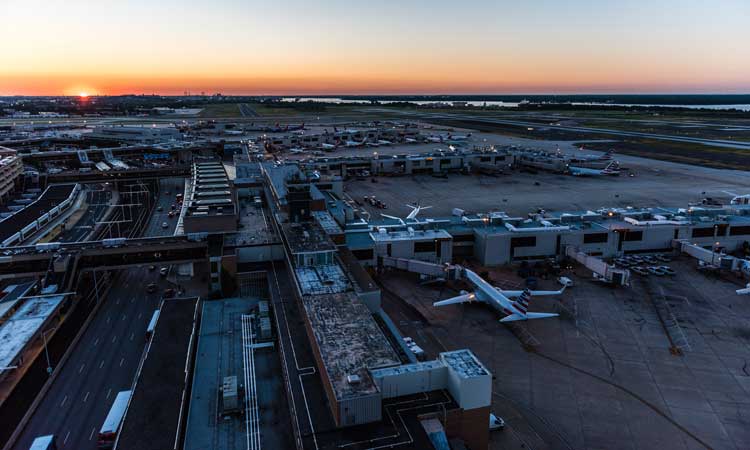Cleaner, Greener Airports: Making Aviation More Sustainable – Philadelphia Airport
- Like
- Digg
- Del
- Tumblr
- VKontakte
- Buffer
- Love This
- Odnoklassniki
- Meneame
- Blogger
- Amazon
- Yahoo Mail
- Gmail
- AOL
- Newsvine
- HackerNews
- Evernote
- MySpace
- Mail.ru
- Viadeo
- Line
- Comments
- Yummly
- SMS
- Viber
- Telegram
- Subscribe
- Skype
- Facebook Messenger
- Kakao
- LiveJournal
- Yammer
- Edgar
- Fintel
- Mix
- Instapaper
- Copy Link
Posted: 11 June 2021 | Elena Fisher | No comments yet
In the latest instalment of International Airport Review’s exclusive series, Elena Fisher, City Planner in the Division of Aviation for the City of Philadelphia, writes how the DOA is working beyond its own initial sustainability goals to collaborate with outside organisations and government in order to achieve a truly integrated and connected approach at Philadelphia International Airport.


People First – that is the first tenet of the City of Philadelphia’s Division of Aviation’s (DOA) value statement, PRIDE (People, Respect, Integrity, Diversity, Excellence). We recognise that supporting human needs is vital to a sustainable society and that collective action is needed to achieve net zero carbon emissions, a transition to renewable energy and to address climate change. Accordingly, we seek to promote not just employee and passenger wellness, but to support societal wellness, as well. This means employing a holistic approach with collaborative partnerships and aligning goals with our stakeholders to achieve the necessary conditions for sustainability – equitable access, economic development, technological advancement and environmental conservation.
The DOA already has a well-established programme focused on recycling and waste diversion; energy efficiency and emissions; noise management; water quality and conservation; and biodiversity”
Late in summer 2020, the DOA, which operates Philadelphia International Airport (PHL) and Northeast Philadelphia Airport (PNE), began two closely coordinated efforts: an Airport Sustainability Management Plan (SMP) and a Climate Adaptation and Resiliency Plan (CARP). The DOA already has a well-established programme focused on recycling and waste diversion; energy efficiency and emissions; noise management; water quality and conservation; and biodiversity. Historically, our programme has primarily targeted what we could achieve within our property boundary and through our employee and partner efforts. With our two plans, we are now seeking to combine this internal focus with an outward look, engaging employees and improving operational efficiency while doubling down on our work with outside organisations, government at all levels, international associations and the aviation industry in support of common goals. Our SMP will fit within the United Nations’ (UN) Sustainable Development Goals (SDGs) framework. These goals were designed to deal with sustainability issues in an integrated way, including directing attention to inequities and problems related to human rights. Through increased collaboration and engagement, we believe that we can create economic and social value while minimising environmental impacts over the long term1.
A key strategy of our sustainability planning process will be education, including the awareness of the interdependence of the economy, society and the environment and that we are limited by planetary boundaries2. The interrelationships between these systems is so complex that no single individual or group of experts has all of the answers. Through information exchange, we will promote enthusiasm and effective participation in sustainability initiatives as we strengthen and expand our partnerships, promote equity, support emerging energy markets, engage our employees, reduce emissions and energy use and innovate.


Credit: Stanford School of Earth, Energy & Environmental Sciences4 – Figure 1.
Figure 1 illustrates the idea of people, or society, as the connection between the economy and the environment. This picture also depicts the interdependence of and the hierarchical relationship between these three systems and the idea that humans cannot live without the environment and the economy cannot exist without humanity3. Taken another way, changes to the economy will reverberate through society and impact the environment, but, ultimately, we are limited by planetary boundaries3. These interconnections are far reaching. So, there will always be consequences to these systems that were not anticipated or intended.
Fossil fuels are embedded into our economy5 and lives through a complex web of interrelationships. We will need to untangle these networks and “rewire” our economy for renewable energy and sustainable development. This will necessitate finding new solutions through goal alignment and collaborative partnerships with stakeholders. The DOA is strengthening its coordination with organisations and governments at all levels – local, municipal, regional, national and international. Through our sustainability planning and implementation, we will assess our impacts on external stakeholders, considering factors such as magnitude, geographical extent, length of time, impact to value chain6 and industry effects (e.g., how are we supporting or detracting from the industry’s progress?). This will allow us to better prioritise and coordinate our strategies with those of stakeholders.
Partnerships
FAA, airline partners and concessionaires
To better position our organisation for federal grants or other financing/funding opportunities, the DOA is aligning with the U.S. Federal Aviation Administration (FAA) and the Environmental Protection Agency goals for carbon reductions”
To better position our organisation for federal grants or other financing/funding opportunities, the DOA is aligning with the U.S. Federal Aviation Administration (FAA) and the Environmental Protection Agency goals for carbon reductions. “The FAA’s Voluntary Airport Low Emissions (VALE) grant programme has been an important source of funding for low-emission solutions, such as charging infrastructure for electric Ground Support Equipment (eGSE) and other clean technology projects,” said Api Appulingam, Deputy Director of Aviation, Capital Development, DOA. In 2020, the FAA awarded the DOA $1 million to install 13 charging stations in support of Southwest Airlines’ commitment to replacing 24 petroleum-based GSE vehicles with eGSE. We are currently pursuing funding for pre-conditioned air units through this programme. Grants such as these help to offset initial capital costs for essential investments to reduce the impact of airport operations.
Since 2019, the DOA has supported a partnership between PHL’s concessionaire managers – MarketPlace and PHL Food & Shops – and Philabundance, a member of Feeding America, in which pre-wrapped food nearing its ‘Sell By’ date is picked up at the airport and redistributed to various agencies in the Philadelphia region. Particularly during these challenging times, this programme has been a triple win – supporting people in need, increasing food waste diversion and reducing our carbon impact.


Credit: City of Philadelphia’s Division of Aviation – Charging infrastructure for electric Ground Support Equipment supported with VALE grant funds.
Partnership opportunities in the COVID-19 era
Through the leadership of PHL’s Director of Air Service Development and Cargo Services, Stephanie Wear, the DOA was able to develop the COVID-19 Air Service Recovery and Incentive Program (CASRIP). “Cargo has become a huge focal point throughout the COVID-19 crisis, specifically the shipping of e-commerce purchases, PPA, pharmaceuticals and the COVID-19 vaccine,” said Adam Mitchell, PHL’s Deputy Chief Revenue Officer. “We are also working with developers to address the need of a cold storage neutral facility, which is necessary for vaccine warehousing and distribution and storage of other pharmaceutical products.”
The DOA is partnering with a local health services provider, Jefferson Health, with a focus on equitable healthcare access, and Ambulnz to provide COVID-19 testing at PHL for passengers, therefore enabling PHL to expand connections and destinations.
City of Philadelphia
The DOA is also working closely with our City counterparts and leadership (the DOA is a division within the City’s Commerce Department) to ensure alignment and to avoid missed opportunities. This collaboration has already paid dividends. We are partnering with the City’s Zero Waste Working Group to reduce food waste. Furthermore, our existing arrangement with the Philadelphia Water Department to convert de-icing fluid to energy through anaerobic digestion will continue to reduce energy use and greenhouse gas (GHG) emissions.
In pursuit of Philadelphia’s recent commitment to achieve carbon neutrality by 2050, we are carefully assessing the DOA’s airport-specific opportunities so that our goals work together but account for the unique nature of our operations”
In pursuit of Philadelphia’s recent commitment to achieve carbon neutrality by 2050, we are carefully assessing the DOA’s airport-specific opportunities so that our goals work together but account for the unique nature of our operations. We are working closely with the City and other entities to pursue renewable energy generation in a way that makes sense and are collaborating on a strategy for electricity access to optimise investment benefits based on timing and locational decisions (on-site versus grid).
We recently intensified our outreach and partnership efforts. Our Capital Development department began meeting monthly with the City’s Office of Sustainability, the Chief Resilience Officer and the Philadelphia Water Department. “This routine engagement has maximised our potential for discovering opportunities to advance climate resilience, including an emerging collaboration on a place-based resilience strategy for the area including and surrounding PHL. Once completed, this strategy will enable a holistic approach to blunting the worst consequences of climate change,” said Saleem Chapman, Chief Resilience Officer, City of Philadelphia. In addition, we are participating in the 2022 update of the Philadelphia Hazard Mitigation Plan. Through our involvement in this plan’s Infrastructure Working Group, we are seeking integration of the CARP’s priorities into the City’s initiatives to reduce long-term risk from hazardous events.
Local community
Recognising the importance of our surrounding neighbours, we surveyed one of the adjacent communities to PHL shortly after the New Year, soliciting feedback to better address their concerns about the airport. In March, the DOA provided an overview of the airport and its major ongoing initiatives, answered questions and gave a presentation on our sustainability efforts at one of their community meetings. Working with existing groups will allow us to: better address environmental impacts and hazards, such as flooding; support efforts to mitigate adverse economic impacts resulting from climate change; and provide additional social and economic value. As an example of the latter, the DOA provides a no-cost lease to nearby residents for a community garden on a large tract of land owned by the DOA.
Promoting equity
Promoting equity is a key focus of the DOA. In 2020, in the wake of the George Floyd protests, we established a Racial Equity Advisory Council to “drive more equitable outcomes for DOA employees,” said Rochelle Cameron, CEO, City of Philadelphia, Division of Aviation. In September 2020, the Philadelphia Mayor’s Office of Diversity, Equity and Inclusion selected the DOA to participate in the Citywide Racial Equity Strategy implementation plan. This initiative aligns with the Racial Equity Advisory Council objectives.
Supporting the emerging renewable energy market
Organisations that take advantage of existing government grant programmes, as well as public-private partnerships, will support the development of the renewable energy market, helping to offset the cost of entry”
To reduce the cost of entry to the renewable energy market, the industry needs to confront a number of barriers before it catches up to the mature fossil fuel economy, including building skills in the labour market, improving technology, developing supply chains and costs related to developing large areas of land7. Organisations that take advantage of existing government grant programmes, as well as public-private partnerships, will support the development of the renewable energy market, helping to offset the cost of entry.
The DOA is in the early stages of developing a solar array at Northeast Philadelphia Airport. To promote financial feasibility, the DOA is investigating alternative financing routes for the project, including a Power Purchase Agreement with a private developer. “If successful, a power purchase agreement to install a solar array will give the DOA the potential to cover all or most of PNE’s electricity demand from a clean, renewable energy source. Such a project will help the DOA and the City of Philadelphia to achieve its long-term sustainability goals. In addition, a successful project will be a proof of concept that can be repackaged for more solar projects in the future, not only for PHL and the City of Philadelphia, but another successful illustration of power purchase agreements bringing clean energy to Pennsylvania,” said Jimmy Clarkin, City Planner, DOA.
Engaging employees and improving operational efficiency
The SMP will seek to improve operational economics, efficiency and effectiveness through improved governance and employee engagement, promoting cross-department collaboration and innovation. We believe this strategy is key to reducing consumption, waste, pollution and energy use.
We have begun educating our employees on sustainability by surveying the staff on topics of interest and holding our first seminar in April 2021. We are promoting our employees’ physical and emotional health. Our active employee engagement committee and Racial Equity Advisory Council have been conducting virtual sessions to support employees with our difficult times during the pandemic.


Credit: David Rosenblum, Philadelphia International Airport.
Reducing emissions and energy use
The DOA typically conducts an annual GHG inventory and publishes this online. As of 2019, we were tracking ahead of schedule of our previously established reduction goal (10 per cent absolute reduction in Scope 1 and 2 emissions by 2030). Given the impacts of COVID-19, we elected to use 2021 to enter Airports Council International’s (ACI) Airport Carbon Accreditation (ACA), rather than conducting a 2020 inventory. We are starting at Level 1 while we revisit our goals through the SMP process and establish our roadmap for advancing to the higher levels.
We are expanding our electrification programme, improving our processes toward fleet electrification and the provision of charging infrastructure for both airport and passenger electric vehicles”
In the meantime, we continue to make progress on our Strategic Energy and Emissions Reduction Plan. We are expanding our electrification programme, improving our processes toward fleet electrification and the provision of charging infrastructure for both airport and passenger electric vehicles. Our recent installation of new HVAC units will improve our energy efficiency and reduce air pollution. We are over a year into operating our Compressed Natural Gas shuttle fleet, reducing associated emissions and helping us to exceed our goal of a 30 per cent reduction in petroleum-based fuel use by 2030. Our investment in LED lighting in the terminals and outside continues to pay off, reducing our annual energy use and costs. We will expand a pilot programme of mobile liquid collection sinks at the security checkpoints, promoting the reuse of plastic bottles and increased diversion from landfills while decreasing risks to employee injuries and minimising our waste transport costs. Lastly, the restroom upgrades that are underway will include low-flow fixtures to reduce both potable water and energy consumption.
Innovation
Innovation is an important element of the DOA’s strategic plan. At Northeast Philadelphia Airport, to strengthen Runway 6-24, we are employing an inventive process of mixing sub-grade with cement, reducing the quantity of new material used, thereby reducing hauling trips, fuel and GHG emissions. Philadelphia International Airport is one of only three U.S. airports to employ a light-weight aggregate made from recycled glass material for construction. We used the product for the foundation of our fuel tank control building and the compound is a key component of the Remain Overnight (RON) apron that is currently under construction. The latter is the largest foamed glass aggregate project in the world to date. Use of this all-weather product promotes diverting waste from landfills and decreases hauling trips and construction time.
Conclusion
Achieving net zero carbon emissions will require meaningful changes in habit and activities, as well as a transition to renewable energy”
The environment, society and economy are interdependent systems, limited by planetary boundaries and driven by people. A holistic approach is necessary to address the challenges from these complex relationships. Achieving net zero carbon emissions will require meaningful changes in habit and activities, as well as a transition to renewable energy; this cannot be done without overcoming barriers created by a global economy deeply entrenched in the fossil fuel industry and focusing heavily on partnerships.
The DOA will do its part. Engaging our employees, passengers and external stakeholders will be key as we continue our CARP and Sustainability Management Plan efforts. Our goal is to develop continual improvement processes for supporting economic development and human needs while promoting environmental conservation. We will refine our approach as changes happen and new information emerges to increase the value that we can provide as an organisation and airport system.
References
- ACI Europe Sustainability Strategy, November 2020
- Sustainability Illustrated. (2014, April 8). Triple bottom line (3 pillars): sustainability in business [Video]. https://www.youtube.com/watch?v=2f5m-jBf81Q&list=PLEXqjIYY5zi5DfC62qaxD7EafyFJVKq2J&index=5
- ACI Europe Sustainability Strategy, November 2020, https://www.stockholmresilience.org/research/planetary-boundaries/planetary-boundaries/about-the-research/the-nine-planetaryboundaries.html
- Stanford School of Earth, Energy & Environmental Sciences. In Facebook [Stanford Center for Professional Development]. Retrieved May 7, 2021, https://es-la.facebook.com/StanfordProfessionalDevelopment/photos/the-economy-is-a-wholly-owned-subsidiary-of-the-environment-and-not-the-other-wa/10158580719865317/
- Bergquist, Ann-Kristin, Business and Sustainability: New Business History Perspectives. p.2. Retrieved May 7, 2021, from https://www.hbs.edu/ris/Publication%20Files/18-034_39d7d71d-9e84-4e8b-97c0-0e626f75293c.pdf
- ACI Sustainability Strategy, November 2020, p. 52
- “Barriers to Renewable Energy Technology.” Union of Concerned Scientists, Reports & Multimedia, 6 June 2014, https://www.ucsusa.org/resources/barriers-renewable-energy-technologies
Elena Fisher is a city planning professional who joined the Sustainability Team within the City of Philadelphia’s Division of Aviation in 2018. Her work at the DOA includes sustainability, environmental compliance and planning projects. She is a member of the leadership team that is developing the DOA’s Sustainability Management Plan and Climate Adaptation and Resiliency Plan. She holds a Master’s degree in city planning (MCP, University of Pennsylvania) and a Bachelor’s degree in liberal arts, specialising in health policy and administration (BA, Penn State) and is certified by the American Institute of Certified Planners (AICP). Prior to joining the DOA, she has held roles in the public and private sectors in land use planning, downtown and park planning and the health insurance industry.
Related topics
Air freight and cargo, Airport Carbon Accreditation (ACA), Airside operations, Cleaner, Greener Airports: Making Aviation More Sustainable Series, COVID-19, Emissions, Ground handling, Machinery, Regulation and Legislation, Runways and pavements, Sustainability, Sustainable development, Terminal operations, Workforce
Related airlines
Related organisations
Airports Council International (ACI World), City of Philadelphia's Department of Aviation, Federal Aviation Administration (FAA)


















